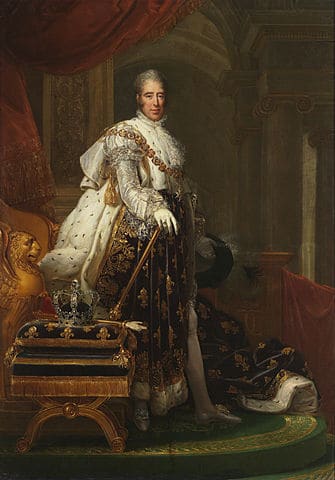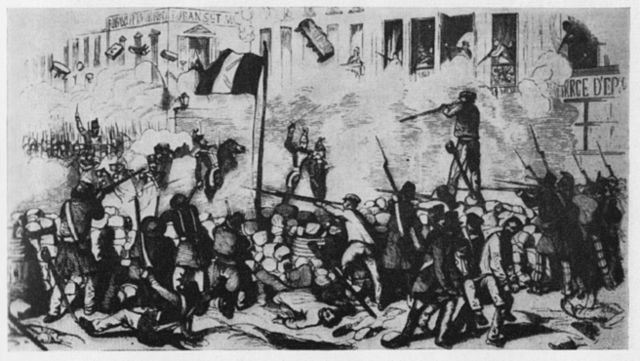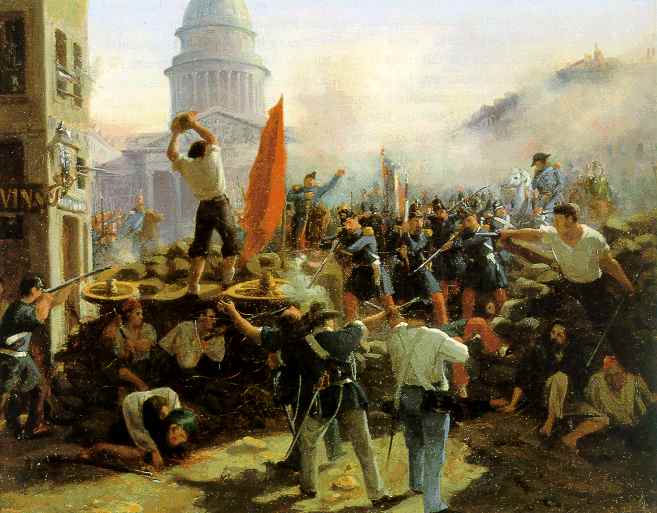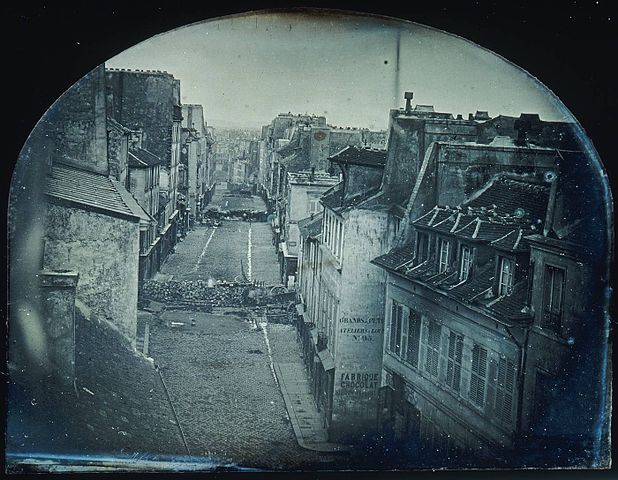Everything You Need to Know About the French Revolution of 1848
Between the nation’s involvement in the American Revolution, and their own French Revolution from 1789-1799, France is no stranger to revolution.
This time around, it’s 1848 and the French still aren’t satisfied with their leaders – and for good reason. Keep reading to discover everything you need to know about the French Revolution of 1848!
Setting the scene
I have to take you back a few decades in order to set the historical scene in France in the 19th century. In 1824, Charles X ascended the throne as King of France. Charles was supported by royalists, but most of the French population didn’t like him or his ruling style.
At this point, France was supposed to be ruled as a constitutional monarch. You’ll remember that they didn’t chop the heads off of all of those royals in the late 18th century for nothing! As a compromise after the French Revolution of 1789, the Charter of 1814 was created so that France could continue to have a monarch, but the people would have more of a say in how things were run.
This compromise worked well enough under King Louis XVIII, but when he died and his brother Charles took the throne, things quickly went downhill.
In 1830, Charles passed several decrees which included taking away freedom of the press. The people revolted immediately, resulting in the Three Glorious Days, or the July Revolution. The streets were filled with protestors and things eventually got violent. Charles X was forced to abdicate the throne and flee to the United Kingdom.
A man named Louis Philippe, who supported the constitutional monarchy and was thus part of the Orléanist political party, was placed on the throne. Louis Philippe’s rule would go on to be known as the July Monarchy.
A better monarchy, but still no democracy
Although Louis Philippe was slightly more down to earth than Charles X, life was still not ideal for the average French person under the July Monarchy. There were free press and trials by jury, but only those who owned land were allowed to vote, which alienated a huge part of the population from the government.
Louis Philippe was a former businessman, and so much of his reforms and the like were targeted at his peers in business, bankers, and those who worked in finance. He didn’t seem concerned with the average French citizen. In fact, the only social reform that was passed under the July Monarchy was that children under the age of 8 were not allowed to work. And, the law was often ignored after it had been passed.
1846 was a tough year in France. There was a financial crisis as well as bad harvests and so there was an economic depression the following year. The railway systems were in disrepair and a large portion of the Paris population was on welfare because there were no jobs. The people were beginning to become fed up, and it’s only natural what happens next.
The February 1848 uprising
At the time, political demonstrations and gatherings were forbidden in France. In order to get around that, revolutionary groups from the middle class began to throw “banquets” to discuss politics and what to do about the current situation in France. These banquets went on from July 1847 until they were ultimately outlawed in February 1848. And so the French Revolution of 1848 began.
On February 22, 1848, crowds of angry Parisians flooded the streets to protest the new orders. They were displeased with Louis Philippe as well as his Prime Minister François Guizot. The angry mobs marched through the city shouting out insults and chants against the king and the Prime Minister, and the next day, Guizot resigned.
Paris was soon shut down and barricades were erected to keep the angry mobs at bay, and inside the city limits. Eventually, an angry mob tried to storm the royal palace, and in fear, Louis Philippe abdicated the throne and fled to England to hide. Before he left, he urged that his grandson, Philippe, be crowned as the next king. This would never happen and in fact, Louis Philippe was the last king that France ever had.
The rise of the Second Republic
Left with no king or ruler of any kind, there were some decisions that needed to be made concerning what kind of government would be set up in France. In addition to installing a new government, unemployment and the right to vote were both important issues.
On February 26, 1848, Alphonse de Lamartine, a French poet, was elected as president. He held this role for three months while the Constituent Assembly was tasked with creating a new, republican government known as the Second Republic.
In March, all men in France were given the right to vote (women wouldn’t be allowed to vote until 1944!). Relief from unemployment came in the form of National Workshops, which promised French citizens the “right” to work. These workshops didn’t solve the unemployment problem – not by a long shot – but they did help.
But, by June 1848, there was more unrest in France. Although there were measures to help the unemployed and poor put in place in Paris, the rest of the country felt left behind. Plus, in order to fund the National Workshops, landowners in the countryside were being heavily taxed. Now, instead of tensions between the average French citizen and the ruling class, those who lived in rural France resented the Parisians.
The country was soon split in two again: with some wanting to continue on the road to democracy and others who wanted a return to the days of Louis Philippe. The only thing left to do was to have an election to determine who the new leader of France would be. By a landslide, Louis-Napoléon Bonaparte (Napoleon III) was elected. After the election, political and social unrest generally calmed down in France, marking the end of the Revolution of 1848 in France.
Conclusion
France wasn’t the only nation in Europe that had a revolution in 1848, and I definitely encourage you to do some of your own research to find out more about that. 1848 truly was the year of revolutions in Europe and there is a lot to learn.
If you’re in Paris and want to discover even more about French history, check out our walking tour options here!
Planning a trip to Paris ? Get ready !
These are Amazon’s best-selling travel products that you may need for coming to Paris.
Bookstore
- The best travel book : Rick Steves – Paris 2023 – Learn more here
- Fodor’s Paris 2024 – Learn more here
Travel Gear
- Venture Pal Lightweight Backpack – Learn more here
- Samsonite Winfield 2 28″ Luggage – Learn more here
- Swig Savvy’s Stainless Steel Insulated Water Bottle – Learn more here
Check Amazon’s best-seller list for the most popular travel accessories. We sometimes read this list just to find out what new travel products people are buying.















